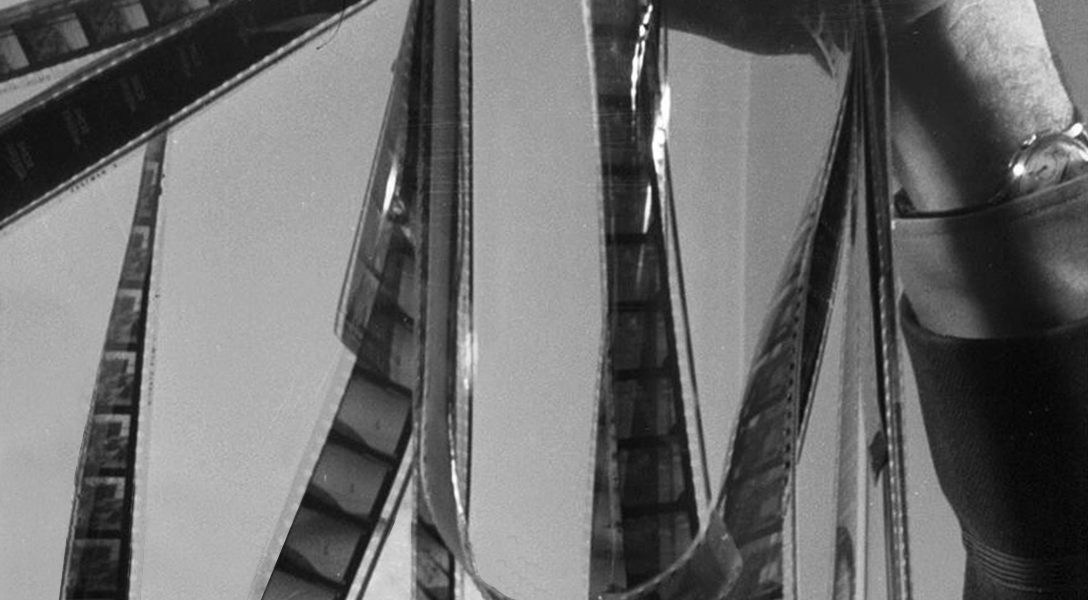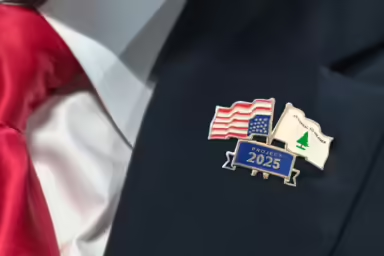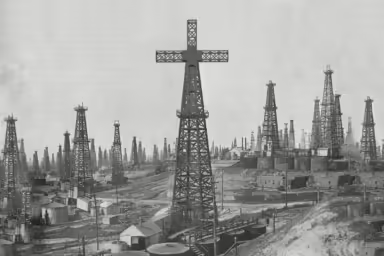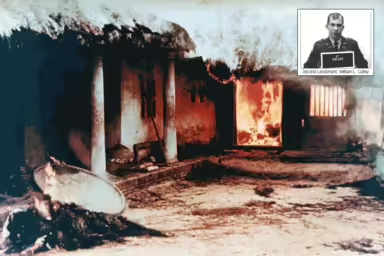No need to rely on eyewitness testimony. Be your own witness. See if we prove that action seen on the Nix film of the assassination is missing from the more well-known Zapruder film. Or not.
|
Listen To This Story
|
Milicent Cranor, a WhoWhatWhy senior editor with a background in forensic medical publishing, has studied the JFK assassination on and off for more than two decades. In this essay, Cranor asks readers to consider whether there is a significant discrepancy between the Nix and Zapruder films of the assassination, and if this indicates tampering. She also focuses on the Warren Commission testimony of Clint Hill, the Secret Service agent who jumped onto the back of the President’s limousine. What he said seems to suggest he saw Kennedy being shot in the head — for a second time — immediately after the first time. This would contradict the Commission’s central finding that JFK was killed by a single shooter.
The other day I was trying to make sense of some strange discrepancies in what a Secret Service agent said about what he saw when President John F. Kennedy was shot.
I’m referring to Clint Hill, the man who jumped onto the trunk of the limousine to protect Jackie Kennedy who had gone out onto the trunk of the car.
Here’s what I can’t sort out: His stories do not agree with the films, and the films do not seem to agree with each other.
Amateur films by Abraham Zapruder and Orville Nix do not agree with each other in at least one obvious way. James Norwood, a retired professor of Humanities, University of Minnesota, was perhaps the first to point out what seems to be a definitive discrepancy:
In the Zapruder film of the assassination, Jackie goes only just beyond the middle of the trunk before retreating.
In the Nix film, Jackie goes noticeably further out on the trunk.
Before looking at stills from these rather fuzzy films, you may want to see a good clear picture of the trunk, and the reference points that help nail down Jackie’s location on the trunk at various times: the seatback, the handholds, and the word on the side of the limousine (Continental).
One other thing to be aware of is the position of the photographers, relative to each other and to the street. The picture below — a still from the Nix film — shows Abraham Zapruder directly across from Nix, standing on an abutment.
Zapruder’s position indicated by yellow arrow on the Nix film below. (From this version of the film.)

Orville Nix stood across the lawn on the south side of Main Street, but we have no picture of him at the time. But you can tell a lot about where he stood from his film itself. Please go here to see an overhead view of Dealey Plaza. And to orient yourself even more, check out the view — in real time — from the alleged sniper’s nest in the Texas Book Depository Building: Earthcam of Dealey Plaza.
Zapruder Film
.
Below is an especially clear copy of Zapruder frame #375. It shows the farthest Jackie gets onto the trunk, in this film.
Consider the distance between Jackie’s right hand — and the left handhold grasped by Clint Hill. It looks to be almost a foot.

To see a slow motion of the sequence showing Jackie on the trunk, please go here. For your convenience, here are links to frames that appear before, during, and after Jackie gets to the farthest place on the trunk. Before: Z-368, Z-369, Z-370, Z-371, Z-372, Z-373, Z-374. During: Z-375, Z-376, Z-377, Z-378, Z-379, Z-380. After: Jackie begins to retreat. Z-381, Z-382, Z-383, Z-384, Z-385, Z-386, Z-387, Z-388, Z-389, Z-390, Z-391, Z-392, Z-393, Z-394, Z-395, Z-396. (Go here for individual still frames from the entire extant film.)
Nix Film
.
Below is a still frame that seems to show Jackie much closer to Hill. Jackie’s right wrist hovers at the edge of the trunk, and her hand seems to have reached the handhold. Her right elbow is above the word Continental on the side of the car. (It shows up only as a white blur on the blue near the bumper.)
Where are the Zapruder film equivalents to these frames?


I can find no cache of individual frames from the Nix film, but here are two copies of the film that offer different advantages:
A good steady copy that stops on each frame:
A slow motion film, but not too slow:
What Does It All Mean?
.
We don’t really know what any of it means. But we do know that a tremendous amount of chicanery has been performed in the presentation of evidence in this entire case. (To see some astounding examples concerning the medical evidence, please go here, here, here, here, here, here, here, here, and here.)
Orville Nix said that frames from the copy of his film are missing. (The original was never returned to the Nix family; it was “lost.”) But that film — at least as far as Jackie’s escapade on the trunk is concerned — seems less edited than the Zapruder film.
The Nix film shows far less detail because it was taken at a distance. But it does provide perspective and landmarks in the background. Removal of too many frames on that film would be noticeable.
A third amateur film of the assassination, taken by Marie Muchmore, only shows Hill getting off the follow-up car and making a run for the Kennedy’s car. JFK is hit in the head before he reaches the car, or so it appears — on that badly damaged film.
https://www.youtube.com/watch?v=FOthjMTWTlE
The Zapruder film gives a much closer view of the action, and of whatever may have landed on the trunk as a result of JFK’s devastating wound which might suggest a shot from the front — a possibility that would raise serious questions about the official narrative of the assassination, that JFK was shot from behind. Such a possibility may explain why those frames were removed.
But there’s something else about this close view — it’s so close you can’t see exactly when Clint Hill first gets into the picture.
When did Hill actually grab onto the limousine the first time, before he fell off and got back on again? As you will see from what follows, this is a crucial question.
If Clint Hill told the truth when he testified before the Warren Commission, then — without knowing it — he witnessed a second head shot.
Hill said he saw JFK’s head come apart after he reached the car. But we know from all the films that JFK was shot in the head almost immediately after Hill got off the running board of the follow-up car.
Many witness stories suggest JFK was hit more than once in the head in a flurry of shots fired close together. (Documented below.)
In the following excerpts from Hill’s testimony before the Warren Commission, you will find specific reference points that seem to nail down the exact moment he heard the headshot.
As you will see, he associates that shot with the first time he grabbed the handgrip. And, he says, when he mounted the car the sound of that shot was different from the earlier one. His analogy, standing against something metal strongly suggests he was in contact with the car when JFK was shot in the head. These are physical — even visceral — connections he makes with the time JFK’s head came apart.
And that moment does not show on the Zapruder film.
What Did Clint Hill Witness — and When?
.
I heard a noise from my right rear, which to me seemed to be a firecracker. I immediately looked to my right, and, in so doing, my eyes had to cross the Presidential limousine and I saw President Kennedy grab at himself and lurch forward and to the left.
I jumped from the car, realizing that something was wrong, ran to the Presidential limousine. Just about as I reached it, there was another sound, which was different than the first sound. I think I described it in my statement as though someone was shooting a revolver into a hard object — it seemed to have some type of an echo. I put my right foot, I believe it was, on the left rear step of the automobile, and I had a hold of the handgrip with my hand, when the car lurched forward. I lost my footing and I had to run about three or four more steps before I could get back up in the car.
Between the time I originally grabbed the handhold and until I was up on the car … the second noise that I heard had removed a portion of the President’s head, and he had slumped noticeably to his left. Mrs. Kennedy had jumped up from the seat and was, it appeared to me, reaching for something coming off the right rear bumper of the car, the right rear tail, when she noticed that I was trying to climb on the car. She turned toward me and I grabbed her and put her back in the back seat…
Soon after, Hill was asked, “Was there anything back there that you observed, that she might have been reaching for?” His response:
I thought I saw something come off the back, too, but I cannot say that there was.
Asked about the origin of the “second” shot he heard:
It was right, but I cannot say for sure that it was rear, because when I mounted the car it was — it had a different sound … than the first sound that I heard. The second one had almost a double sound — as though you were standing against something metal and firing into it, and you hear both the sound of a gun going off and the sound of the cartridge hitting the metal place…
The right rear portion of his head was missing. It was lying in the rear seat of the car … There was so much blood you could not tell if there had been any other wound or not, except for the one large gaping wound in the right rear portion of this head.
In recent interviews (here, here, here, and here), Hill revised what he reported in his sworn testimony. And he mixed in the claims of the official story, as if they were his own observations. For example, he said the bullet entered the back of the head [gestures to area low in the back of the head] and came out the front, causing a piece of bone to flip out, although it adhered to the scalp. A far cry from his original observation of a “large gaping wound in the right rear.”
Corroboration of Sorts
.
It seems that several witnesses did not hear the actual first shot. Or even the next one. And some heard a shot — for the first time — when Kennedy was hit in the head, then they heard one or more shots afterward.
The stories I find the most convincing are those involving a reference point associated with the sound of the shot, as shown in the case of Clint Hill. Here are a few examples:
Emmett Hudson, Dealey Plaza groundskeeper: He associates the second shot he heard with the head wound. And he associates a third shot with the way it sounded as he lay on the ground.
I happened to be looking right at him when that bullet hit him — the second shot … it looked like it hit him somewhere along about a little bit behind the ear and a little bit above the ear.
I just laid down over on the ground [urged by another witness to get down] … and when that third shot rung out and when I was close to the ground you could tell the shot was coming from above and kind of behind.
I don’t know if you have ever laid down close to the ground … when you heard the reports coming, but it’s a whole lot plainer than it is when you are standing up in the air.
Another reference point is the moment a photographer takes a picture. Bystander Phillip L. Willis said, “The shot caused me to squeeze the camera shutter, and I got a picture of the President as he was hit with the first shot. So instantaneous … the crowd hadn’t had time to react.”
To the west of Willis, about three seconds later, Associated Press photographer James W. Altgens also took a photo of the motorcade. The strange thing is, Altgens said he took that picture almost simultaneously with what he called “the first shot.” When questioned closely about the timing, Altgens swore that he heard no other shots or noises that could have been shots before this “first” one.
Even further west, Mary Moorman took a Polaroid picture of JFK as he was being shot in the head. She said, “As I snapped the picture … I heard a shot ring out … Then I heard another shot ring out and Mrs. Kennedy jumped up in the car … I heard three or four shots in all.”
Sheriff William Decker, who was in the lead car, which was so far to the west it was almost at the underpass, said, “As the Motorcade was proceeding down Elm Street, I distinctly remember hearing 2 shots. As I heard the first retort [sic], I looked back over my shoulder and saw what appeared to me to be a spray of water come out of the rear seat of the President’s car.”
Special Agent George Hickey was also in the follow-up car with Hill. Below, he seems to be describing the effects of two bullets fired nearly simultaneously, one of which he thought was a near miss, disturbing only JFK’s hair. Other witnesses had the same impression.
I heard a loud report which sounded like a firecracker … A disturbance in 679X caused me to look forward toward the President’s car … At the moment he was almost sitting erect I heard two [more] reports which I thought were shots and that appeared to me completely different in sound than the first report and were in such rapid succession that there seemed to be practically no time element between them.
It looked to me as if the President was struck in the right upper rear of his head. The first shot of the second two seemed as if it missed because the hair on the right side of his head flew forward and there didn’t seem to be any impact against his head. The last shot seemed to hit his head and cause a noise at the point of impact which made him fall forward and to his left again.
The President was leaning forward when he stiffened perceptibly at the same instant what appeared to be a rifle shot sounded … the President seemed to stiffen and come to a pause when another shot sounded and the President appeared to be badly hit in the head. BREHM said when the President was hit by the second shot he could notice the President’s hair fly up … and then [he] roll[ed] over to his side … Brehm said that a third shot followed … between the first and third shots, the President’s car only seemed to move some 10 or 12 feet … almost came to a halt after the first shot [FBI statement]
‘I guess there was a noise’
.
You may be wondering at this point: How could anyone with normal hearing not have heard that first loud bang? Jacqueline Kennedy gave a plausible explanation during her testimony to the Warren Commission:
You know, there is always noise in a motorcade and there are always motorcycles besides us, a lot of them backfiring. I guess there was a noise, but it didn’t seem like any different noise really because there is so much noise, motorcycles and things. But then suddenly Governor Connally was yelling …
Kennedy’s limousine was surrounded by nine motorcycle policemen: five in front, and four more close behind — two on each side putt-putting away.
The Altgens photo shows that Clint Hill still has not jumped off the running board. But he testified that he did so immediately after hearing the “first” shot. Like many other witnesses, Hill apparently did not hear the first shot, nor did he hear the one that struck JFK in the head before he reached the car.

Another thing you should know: Promoters of the lone assassin theory often stress the fact that one shot can sound like two. But what they don’t tell you is that, depending on the location of the witness in relation to the shooter, two shots can sound like one.
The first Bang can cause the little muscles supporting the eardrum to contract defensively, making one temporarily deaf to a second Bang. But many did apparently hear two nearly simultaneous shots at the time of the head wounding.
(This has implications for jiggle analysis — the correlation of a shot with film blur caused by a photographer’s startle reflex. For more on this, go here.)
Areas of Deception and Confusion
.
There is another, more sinister explanation for the confusion and discrepancies when it comes to the number and location of shots. It can be found in an article by attorney and JFK researcher Carol Hewett that is just stunning, rich in insight and very hard-to-get information.
She came upon a diagram, printed in 1963 showing a circle surrounding three snipers in a triangle. Each sniper is in a designated spot:
Area of Certain Location
Area of Deception (directly across from the Area of Certain Location)
Area of Confusion (one on each side of the Area of Certain Location)
Its caption is chilling:
Chart from Military Armament Corporation. The muzzle blast spread from a suppressed [i.e., “silenced”] weapon shows deception and confusion resulting from attempts to locate sound origin from a weak fixed source at various angles from the source.

Doctored Sound, Doctored Film?
.
Josiah Thompson, author of Six Seconds in Dallas, said in his book, “The present study seeks to make proper use of the photographs inasmuch as they constitute the only inviolable form of evidence. Whereas witness reports can be in error.”
Films and photographs are hardly an “inviolable form of evidence,” as is acknowledged in what many consider the “bible on evidence,” McCormick on Evidence, 3rd Ed., Edited by Edward W. Cleary, West Publishing Co., St. Paul, MN, 1984. Title 8, Chapter 21, Demonstrative Evidence; Section 214:
The principle upon which photographs are most commonly admitted into evidence is the same as that underlying the admission of illustrative drawings, maps, and diagrams. Under this theory, a photograph is viewed merely as a graphic portrayal of oral testimony, and becomes admissible only when a witness has testified that it is a correct and accurate representation of the relevant facts personally observed by the witness. (p.671)
Motion pictures, when they were first sought to be introduced in evidence, were frequently objected to and sometimes excluded on the theory that they afforded manifold opportunities for fabrication and distortion…
And in real life, as demonstrated by the chart from the Military Armament Corporation, there are also manifold opportunities for fabrication and distortion.
I thank Pamela Brown, a flautist and JFK assassination researcher, for her help in understanding certain aspects of Kennedy’s limousine.
Related front page panorama photo credit: Adapted by WhoWhatWhy from Dealey Plaza (Father of Nehrams2020 / Wikimedia – CC BY-SA 3.0).




